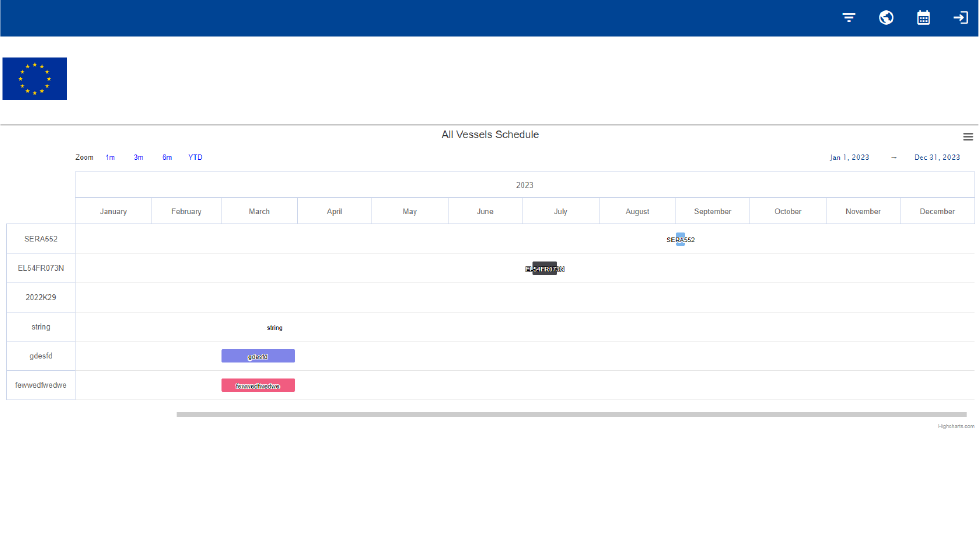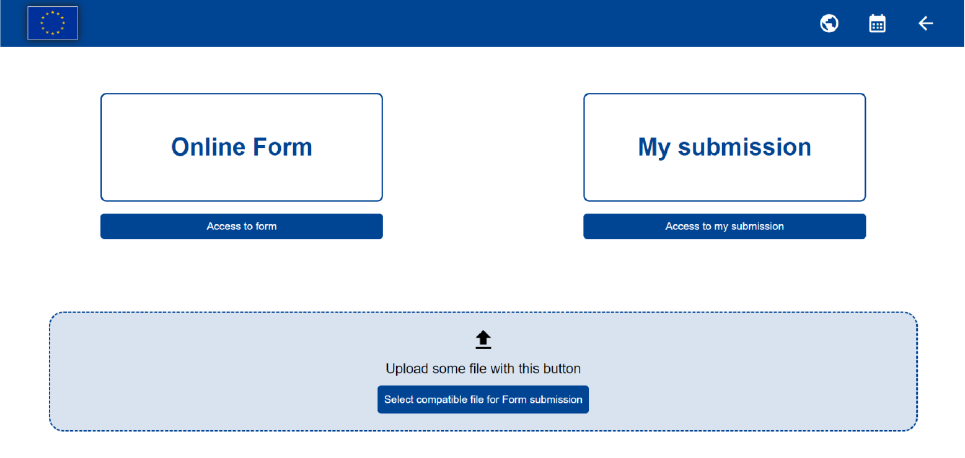
All Ocean Obs (CINEA/EMFAF/2021/3.4.9/SI2.876379)
[25/05/2023] 1
All Ocean Obs
STUDY FOR REPORTING OBLIGATIONS FOR OCEAN OBSERVATION
Deliverable title: Introducing All Ocean Obs - A Comprehensive Guide to
Platform Features and Functionality
Contract number: CINEA/EMFAF/2021/3.4.9/SI2.876379
Document History:
Version
Date
Description
0.1
23/03/2023
User manual referred to the first draft of the web portal.
Released on 24/03/2023
0.2
25/05/2023
User manual referred to the first draft of the web portal.
Released on 25/05/2023

All Ocean Obs (CINEA/EMFAF/2021/3.4.9/SI2.876379)
[25/05/2023] 3
1. Introduction
The present manual refers to the version v2 of the web portal deployed on 25/05/2023 on the web
page: https://alloceanobs.s4oceandata.eu/portal/
Specific updates of the present manual will be released contextually with portal release as shown in
the release table below (Table 1).
New sections or modified features descriptions in the current version of the manual are highlighted
in green to facilitate progress tracking.
Table 1: Web portal releases
Deliverable
Date
D8 (draft1)
24th Mar 2023
D8 (draft 2)
25th May 2023
D8 (draft 3)
25th Aug 2023
D8 (final)
25th Oct 2023

All Ocean Obs (CINEA/EMFAF/2021/3.4.9/SI2.876379)
[25/05/2023] 4
WP 5 Short Description
Work Package 5 Prototype online map viewer and design of a web page: A web portal hosting an
online map viewer (digital map) will be produced showing the collected observation plans. The map
viewer will be developed to provide the user with a tool to enable better planning and
implementation of observation and monitoring programmes, and to understand the timing and
location of proposed observations by others. Such a dynamic map viewer will show information
about locations, timing, parameters, etc. of running and planned observational campaigns. Users
will be able to choose between two ocean observation metadata update tools: a web form (HTML)
and a XML upload feature. A web form will guide the user to input metadata according to the
defined template, while dictionaries and standard vocabularies will be linkable and discoverable.
The portal backend will be based on Geoserver, Postgresql, PostGIS, Leaflet, Angular that provide
open standard tools to develop and manage WebGIS data and metadata as required by the tender.
The metadata carried by the XML will update the DB (Postgresql) data that generates a GIS dataset
(PostGIS+Geoserver) that can be consumed by the mapviewer to present and query data. The
map.emodnet-physics.eu mapviewer is adopting a similar workflow. The portal will be displayed on
a webpage hosted on the Commission’s Maritime Forum, compliant with the “europa.eu” domain,
and following the Europa Web Guide harmonized rules for websites (group 1). The system will
present plans as collected by web forms based on the ocean observation reporting template (WP3)
and will allow users to make selections according to metadata e.g. select a certain parameter
(physical, chemical, biological, geological or bathymetrical), a certain area or a specific time. The
web tool will be designed taking into consideration Contracting Authority (DG MARE/CINEA) needs
(WP6) for data presentation and for handover (WP10).
Figure 1: WP5 Gantt
1

All Ocean Obs (CINEA/EMFAF/2021/3.4.9/SI2.876379)
[25/05/2023] 5
2. The platform
All Ocean Obs is a comprehensive system designed to facilitate the visualization of oceanographic
campaigns. The platform seamlessly extracts data from the PostgreSQL database and presents it
through an Angular-based web page. To retrieve the data, the page sends a request via a GET
method to the database, which responds by returning the catalog of missions contained within.
To enable efficient data retrieval, the system includes a structured filter module that utilizes an API
to filter the information stored in the database. This feature enables users to access the data of
interest with ease.
3. The main page
To access the portal the user must visit the official page of All Ocean Obs
(https://alloceanobs.s4oceandata.eu/portal/). The landing page (Figure 2) is characterized by three
main sections:
Figure 2: Landing page of the portal
1. The map that shows the area of interest of each campaign. The user can adjust the view by
clicking and dragging the map to the preferred area.
2. The filter section, which contains a series of text-boxes and drop-down menus to filter the
search of campaigns. To access the filters section, window the user must click on the “Filter”
button positioned at the top of the page. Here the user can select to filter the results based
on the following parameters:
- "Date range": query the database on a defined period of time (calendar function)
- "Areas (Bounding Box)": defines the area of the Bounding Box within which to search
for missions. This section will require the user to define 4 parameters: 'Min
Longitude', 'Min Latitude', ‘Max Longitude' and 'Max Latitude'.

All Ocean Obs (CINEA/EMFAF/2021/3.4.9/SI2.876379)
[25/05/2023] 6
- "Parameter": a drop-down menu list to filter the search based on the parameters
that characterize the vocabulary defined by SDN for the P02 library.
3. The list of campaigns based on the filters applied for the query, by default (no filters applied)
the portal will display all of the public campaigns existing in the portal starting from the most
recent ones (left side of the page).
4. Download function that allows to download filtered missions’ details in csv
4. Viewing the details of a campaign
Figure 3: Details of a campaign
When clicking on “More details” of a specific campaign a page with details regarding that campaign
as well as a map visualization of the area in which it is taking place will appear. As shown above
(Figure 3) the information is organized in two separate sections: while the first contains more general
information, the section below provides a long and detailed list containing additional relevant
information related to the campaign.
Among the many entries included in this section the one named “available opportunities for add”
describes if the organization of the campaign is available for collaborations and campaign access.
The second section contains a variety of self-explanatory additional information.

All Ocean Obs (CINEA/EMFAF/2021/3.4.9/SI2.876379)
[25/05/2023] 7
5. Visualizing data – Gantt chart
It is possible to display the data related to one or more campaigns as a schedule chart by clicking on
the “Planner” icon placed in the top right corner of the screen.
Figure 4: Planner page
The chart displays on the y-axis the identifier code of each campaign recorded in the database. The
x-axis displays a time variable which can be regulated to display the data of most recent campaigns,
from the last month up to a year (top left corner of the chart) but also offers the user the possibility
to manually filter the data through a specific time period (top right corner of the chart).
In addition to this, above this section the user can click on the small drop-down menu to view in full
screen, print or download the chart in a wide variety of formats based on the users’ necessities.

All Ocean Obs (CINEA/EMFAF/2021/3.4.9/SI2.876379)
[25/05/2023] 8
Figure 5: Chart context menu – download section

All Ocean Obs (CINEA/EMFAF/2021/3.4.9/SI2.876379)
[25/05/2023] 9
6. Personal Area
By clicking the log-in icon positioned on top right corner of the landing page, the user can log-in.
Once logged in, the portal allows to upload a form to post information relevant to a specific
campaign within the platform. As shown below, once logged in, the user will be redirected to a page
where he can either: (a) “Access to form”, which will redirect the user to a page where the user
must fill up all of the requested information related to the campaign to proceed, (b) modify drafts
forms or (c) “Drag and drop an XLS/XLSX file” (Figure 6).
Figure 6: Page to create/upload a form

All Ocean Obs (CINEA/EMFAF/2021/3.4.9/SI2.876379)
[25/05/2023] 10
7. Submitting a form
By clicking on “access to form” the user will be redirected to a page which displays a series of
sections as shown below (Figure 7).
Figure 7: Page for creating a form
While most of the sections are self-explanatory, the user must notice that:
a) In the textbox “Insert Organization” under “Basic Information (Organizational)” the user can
either enter the name or the EDMO code, a list of corresponding entries is displayed allowing
to auto fill in all other fields. Organizations information are harvested automatically from
SeadataNet EDMO database.
b) In the text box “Vessel Name” under “Basic Information (Campaign)” the user have to enter
the name of the vessel, while typing a list of possible entries is displayed, the user can select
a vessel and activate the auto fill in for the other information, or continue typing and fill in
all the entries by hand. Vessel information are harvested directly from international
databases
c) In the Ports section the user inserts the port name and a list of ports is shown, the user can
ether select one of the entries or fill in by hand. Port information are harvested from United
Nation ports data base.
d) The section “Coordinates Of Transit From Campaign Area To Port” the coordinates must be
inserted, in decimal degrees format, in the following order: Latitude 1; Longitude 1; Latitude
2; Longitude 2. To help the user a preview map is integrated in the form (Figure 8).

All Ocean Obs (CINEA/EMFAF/2021/3.4.9/SI2.876379)
[25/05/2023] 11
Figure 8: Form map preview
Once completed all of the required fields, click on “Submit” to proceed and submit the form.
8. Updating a draft mission
Clicking on “Access to My Submissions” a new page is opened showing all the missions submitted
by the user. Missions are divided in Draft Missions and Already Submitted Mission (Figure 9).
Figure 9: My Submission page

